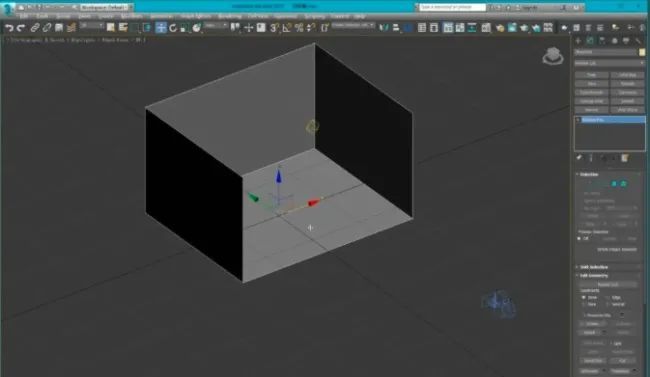As the 3D screens of the SM Building in South Korea has become popular, the 3D LED display in many first-tier cities in mainland China has gradually become popular. These realistic 3D display effects make it appear a new word: “naked eye 3D display” “.
According to the internal analysis report of LED industry data, the naked-eye 3D display screen has gradually become popular in recent years, and once attracted major Internet celebrities and tourists to check in. At the peak, it reached more than 100 million on social platforms in mainland China. , which means that more than 1 in 10 people in China have heard or seen this term.
It is precisely because of this that “naked eye 3D” has quickly become a favorite product of LED manufacturers. From the previous 0.05% productivity to the current 12%, it can be seen that advertising manufacturers have also seen the value of naked eye 3D LED displays. Increased distribution.

All the amazing display effects are inseparable from the technical support behind it. The following will reveal the working principle of the 3D LED display.
How is the 3D effect achieved?
As we all know, the brain is an extremely complex nervous system. What we see with the naked eye can be flat or three-dimensional, because the two eyeballs of a person will see the same object through the distance between the eyes It is this subtle difference that allows the brain to convert the spatial coordinates between objects in the direction in which the line of sight disappears. Through this feeling, the distance and size of the objects can be distinguished, forming a three-dimensional sense, that is, Three-dimensional sense of space.

Amazingly, if we don’t stare at something or focus on the nose, our brain automatically ignores the presence of the nose. This strange phenomenon is called “saccade inhibition” and was accidentally discovered by scientists Erdmann and Dodge in 1898.
Saccade suppression is that the brain automatically filters out what looks blurry, so not only the nose, but also some pictures when we usually glance quickly will be filtered out.
According to scientists’ statistics, every time our eyeballs move quickly, the blurry picture will last for about 50 milliseconds. If we add up the time of “saccade suppression” in a day, it will be nearly 40 minutes.
Why is the brain so considerate, and it actually actively helps us filter the picture?
This is because the blurry visual information produced when the eyeballs move quickly can cause us to feel dizzy. The brain is worried that you will not accept it, so it turns on the automatic filtering function, and gives you a comfortable and bright world in front of you.
The brain can always magically create a lot of things for us, and under such conditions, it will naturally give birth to many magical functions. For example, when we go to the cinema to watch 3D movies, we need to wear this kind of superimposed red and blue colors. ‘s lenses.
However, in most cases of this kind of lens, it only makes the fonts into 3D, and most of the films will not have any special 3D effects. Therefore, the display screen needs to achieve the effect of naked eye 3D. In terms of technology and cost, it is better than wearing 3D glasses in the theater. The easy way is much harder.

In fact, most of the current LED large screen to achieve naked-eye 3D is a three-dimensional effect outlined by the distance, size, shadow effect and perspective relationship of the object in the two-dimensional picture. Just like we see some sketches, they are obviously flat, but they also have a three-dimensional effect.
Although static 3D and dynamic 3D are not the same, so how to make the plane animation produce 3D effect, this is the question we have to think about?
Through continuous practice, it is found that as long as the reference object is used well, the 3D effect can be well realized. The “3D wave screen” of the SM building, which amazes the whole network as soon as it debuts, uses the shadow of the background as a static stereo reference line, and uses the parallax of the eyes to form a 3D illusion, so that the moving waves have a feeling of breaking through the screen.
However, have you noticed that the 3D screens that have become popular recently are composed of two surfaces with different angles. The display screen folds the screen 90°, using video material that conforms to the principle of perspective, the left screen shows the left view of the image, and the right screen shows the main view of the image. When people stand in front of the corner and watch, they can see the object at the same time. Side and front, showing a realistic three-dimensional effect.
Here we have to say something about the slightly deeper principles of the 3D LED display.
When the signal module provides a changing current signal for the magnetic field device, the magnetic field device will generate a changing magnetic field corresponding to the adjacent changing current signal, and the changing frequency of the magnetic field will be synchronized with the refresh frequency of the left and right eyes of the LED display. .

The rotation of the magnetic field reaches the direction of the plane of polarization of the linearly polarized light emitted by the LED display screen, so that the direction of the plane of polarization of the linearly polarized light after the rotation is parallel to the direction of the plane of polarization of the linearly polarized light before the rotation and perpendicular to the direction of the plane of polarization of the linearly polarized light before the rotation. Switching back and forth between the orientations of the plane of polarization of linearly polarized light.
Through this slightly deeper 3D principle, we have a further understanding of the display of 3D LED technology. Of course, in addition to technology, it is also essential in supporting hardware.
Indispensable high-quality lamp beads: REESTAR
Many 3D LED displays use the high-end brand REESTAR series products manufactured by the National Star RGB Super Division as the core display device. The high refresh rate, high grayscale, high dynamic contrast ratio, smooth transition of curved surface/corner, the production level of video material, etc., and Nationstar has also applied for more than 30 patents for it, which shows its profound technical strength.
It is precisely because of the use of such products that the displayed picture quality is delicate, the color is gorgeous, and it also has the characteristics of high brightness, long life, long warranty, etc. Excellent performance, thus presenting a great visual effect to the audience.